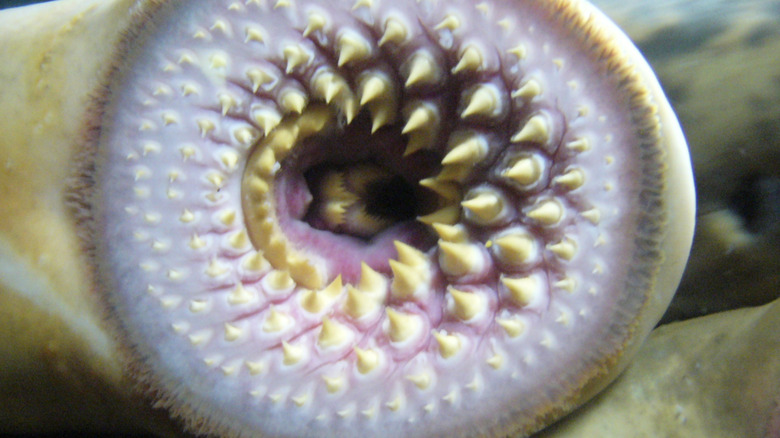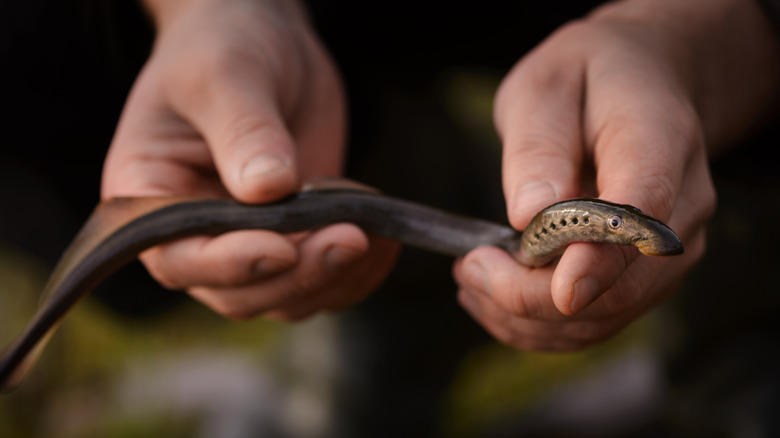The Hideous Fish That Was Said To Be The Cause Of Henry I's Death
They say too much of a good thing is bad a bad thing, but Henry I was hearing none of it. The son of William the Conqueror reigned as King of England from 1100-1135, more than twice as long as his father. But unlike his father, Henry didn't die from battle wounds; he died from overindulgence. Henry's immoderation wasn't wine or red meat. It came in the form of lamprey, a primitive lineage of eel-like fish believed to be 360 million years old, according to the Museum of London Archaeology.
The lamprey is a bizarre-looking fish, with a suction-cup-like face and a jawless mouth that's filled with dozens of tiny teeth. But even their so-called teeth are extremely odd since they are made of keratin (the same as human nails and hair), which is much softer than the enamel of the outer shell of human teeth. Fishermen who have caught the larger form of the species have dubbed it the "sea monster," per Smithsonian magazine. Other species of the creature are parasitic and feed on the blood of other fish.
A delicacy for royals
Back in the Middle Ages, lamprey was considered a delicacy often eaten on meatless days. And for King Henry I, it was a temptation that he could not resist, despite his doctor's orders. In 1135, when Henry traveled to Normandy to see his two grandsons, he gave into his hankering. Per the Vintage News, chronicler Roger of Wendover wrote that Henry I "stopped at St. Denys in the wood of Lions to eat some Lampreys, a fish he was very fond of, though they always disagreed with him, and the physicians had often cautioned him against eating them, but he would not listen to their advice. This food mortally chilled the old man's blood and caused a sudden and violent illness." Henry's body was returned to England and eventually buried at Reading Abbey. The Abbey was destroyed during the Reformation, and no trace of Henry's tomb survived, according to the Guardian.
As for the lamprey, it's still on the menu for royals. A lamprey pie was made for the coronation of Queen Elizabeth II in 1953. Then, once again for her Diamond Jubilee in 2012, according to NPR. For the celebration, one pie was presented to the Lord-Lieutenant of Gloucestershire Dame Janet Trotter. She said the dish was a "great delicacy," which is sent to the monarch on special occasions according to the BBC. "It looks absolutely fantastic. It took 30 hours to make," Trotter said, before adding that lampreys are "curious and horrible" beasts.

